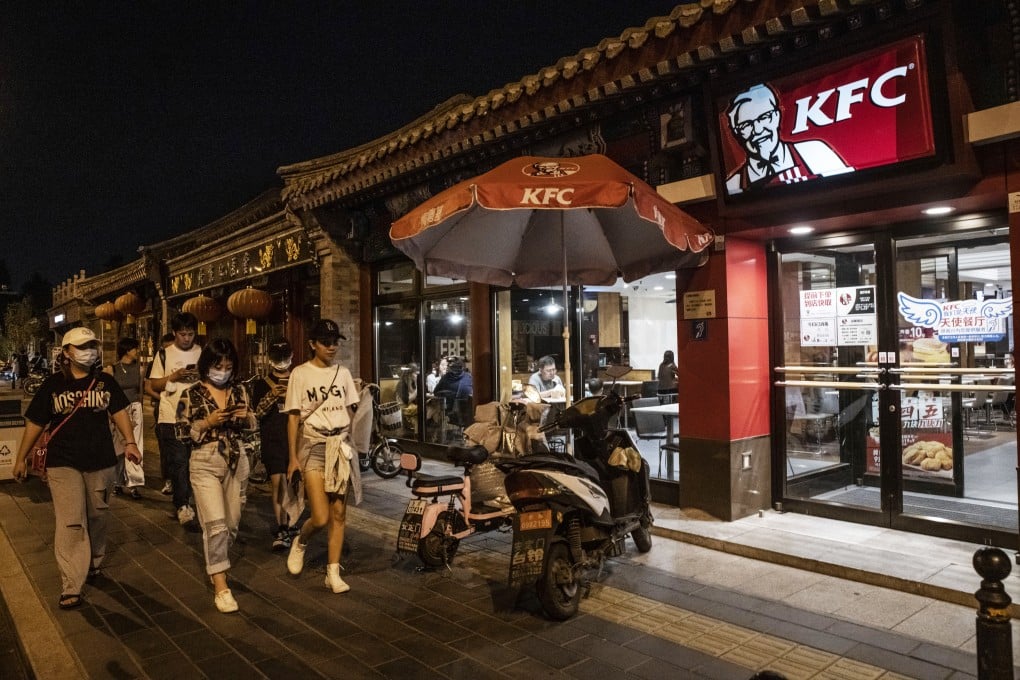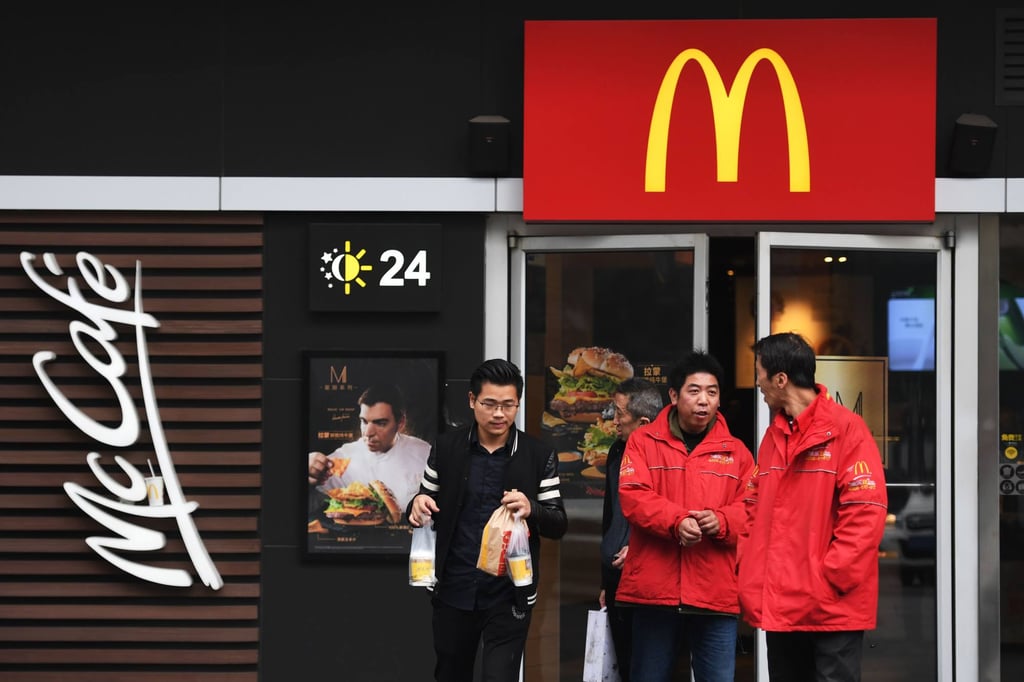KFC, McDonald’s, Haidilao push small-store format to beat China’s consumption downgrade
Fast-food chain operators are pushing small-store model and going further in lower-tier cities to overcome consumption downgrade in China

Each morning around 10am, Tommy Zhang, a medical researcher in Shenzhen, steps off the subway and heads for his office in the city’s bustling college town. As he crosses the overpass, he always sees a food stall where long lines of customers wait for the 15-yuan (US$2.10) breakfast takeaways.
That stall, with its distinctive red logo, belongs to KFC, a fast-food restaurant chain operated by franchise holder Yum China Holdings. It offers several pre-packed food combos for quick pickup. Zhang observed that the breakfast is particularly popular with people working in the neighbourhood, “probably because they need to clock in at work”.
“They seem to be doing great business” by capitalising on the foot traffic there, he said.
Similar stalls run by other popular restaurant chains are mushrooming across China, going by postings on Xiaohongshu, the Chinese Instagram-like social media platform. McDonald’s, for example, has been seen setting up kiosks and food carts in subway stations, streets and parks in cities like Beijing, Guangzhou, and Changsha.

The sprouting of fast-food kiosks underlines the competition among fast-food restaurant operators like Yum, McDonald’s and hotpot chain Haidilao for consumer dollars. At stake is China’s Western fast-food service market, which could reach 4.28 trillion yuan (US$603 billion) next year, according to projections by iiMedia Research, doubling from 2017.